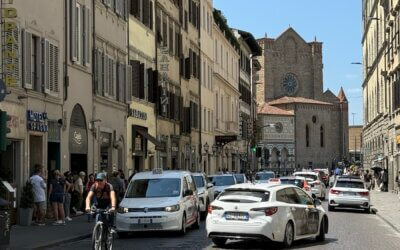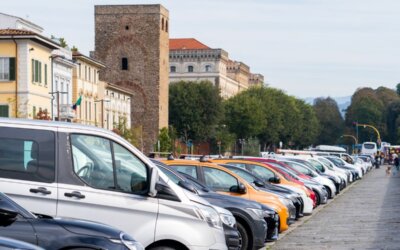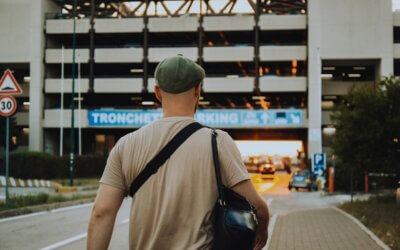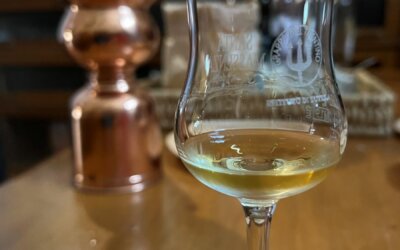- Parking in Florence – How to avoid fines - 11. August 2025
- Telepass Italy: stress-free travel and toll savings - 13. April 2025
- What do I need to bear in mind when parking in Italy? - 21. January 2025
Town on the western shore of Lake Garda – We take you on a little exploration of the western shore of Lake Garda. There are wonderful cities and towns surrounded by breathtaking landscapes, historical sights and of course the azure lake itself. Let’s explore the communities and their highlights together!
Riva del Garda – pearl on the northwest shore of the lake
Let’s start our journey in Riva del Garda. Riva has about 17,000 inhabitants, is located on the northwestern shore of Lake Garda and belongs to the province of Trentino. The town is surrounded by majestic mountains reflected in the deep blue waters of the lake. Already upon arrival you can feel the cheerful atmosphere that Riva del Garda radiates.
The history of Riva del Garda dates back to ancient times and under the Romans it underwent considerable development. In the last decades before Christ it was recorded, together with Brescia, in the Fabia tribe, which testifies its belonging to the Celtic population of Ripa at that time. In 983 Emperor Otto II gave the city as a fief to the Bishop of Verona. Later it fell into the possession of the Prince-Bishop of Trento.
After having been under the control of the Visconti of Milan and the Counts of Tyrol, the city was ruled by the Serenissima from 1440 to 1509. This period brought about the reconstruction of the castle and the construction of the current town hall and bastion (1508), which we can make out from the pine and holm oak forest on the slopes of the Rocchetta.
At the beginning of the 16th century the town fell again into the hands of the Bishop of Trento. In 1703 Riva del Garda was briefly occupied by the French troops of the Duke of Vendome, who left an unpleasant impression. Finally, after the Napoleonic era, the city was occupied by Austria (1813) and after the First World War it was annexed to the Kingdom of Italy.
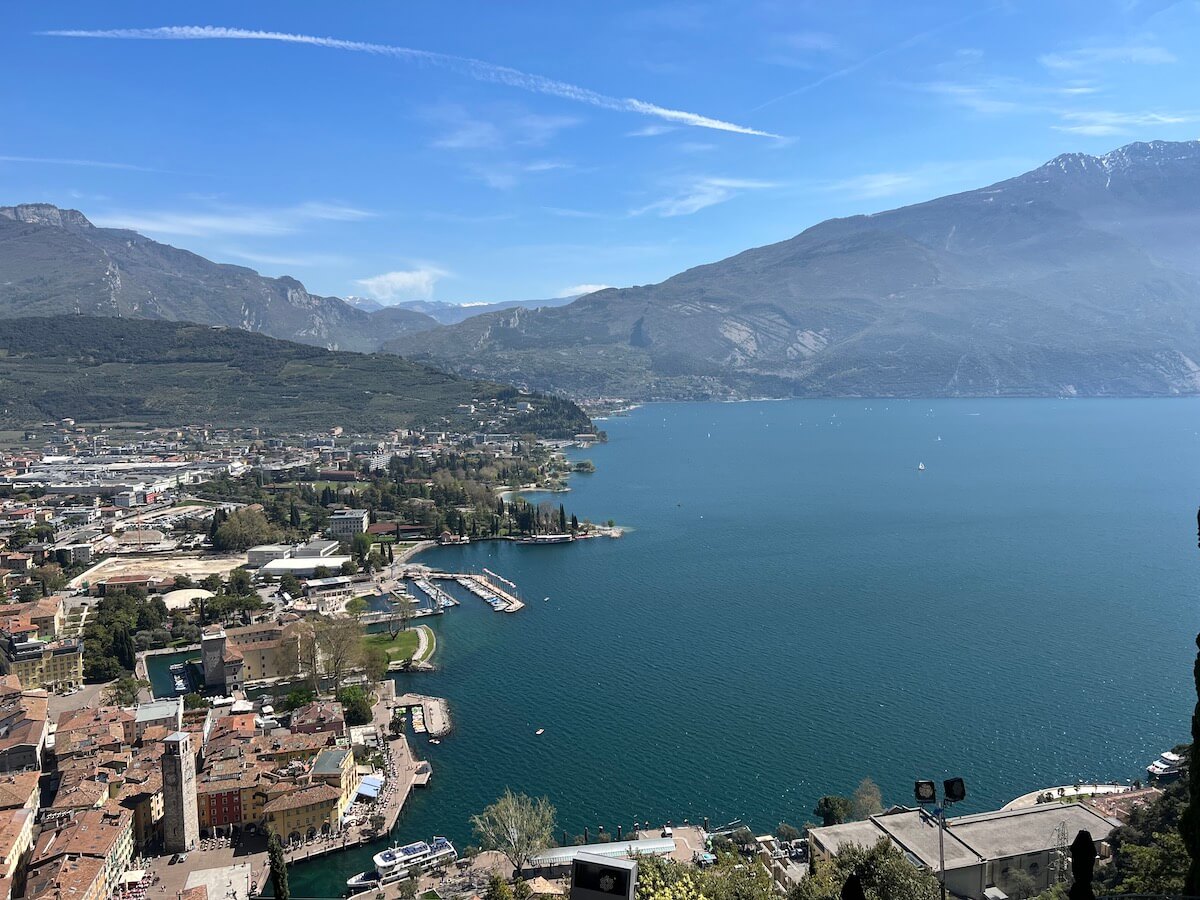
Top 6 sights of Riva del Garda
Piazza III Novembre
The idyllic main square of the charming old town lies directly on the lake shore and is lined with arcades in the Lombard-Venetian style. The tall bell tower Torre Apponale, a remnant of the medieval city walls, dominates the square.
Torre Apponale
The 34 meter high Torre Apponale can be visited from March to October. As you climb the 165 steps, you’ll be rewarded with a breathtaking view of the city and Lake Garda. During the ascent, at a height of 22 meters, you will pass two tower clocks, and at the top of the belfry, the bell “La Renga”, cast in 1532, awaits you. Here, at a height of about 30 meters, you can enjoy a 360° view over the city. From the piazza you can admire the emblem of the city, the gilded angel “l’Anzolim” blowing a trumpet.
Fortress Rocca di Riva
The city fortress, built by the Scaligers in the 12th century, is completely surrounded by water. In the 19th century it was transformed by the Austrians, who used it as barracks. Nowadays the Rocca is home to the Museo Alto Garda, which exhibits archaeological finds from the region and a collection of paintings.
Bastion of Riva del Garda
The ruins of a 16th-century Venetian fortress still rise about 200 meters above the mountain, offering spectacular views of the city. You can reach it on foot in just over half an hour, starting from Via Monte Oro in the direction of Limone. Since 2020, there is an even more pleasant alternative: the new panoramic elevator that goes up to the bastion from Via Monte Oro in just three minutes.
Hydroelectric power station Riva del Garda
This is where 1920s architecture art meets 21st century sustainability. If you are wondering how a hydroelectric power plant is operated in front of a mountain, you should take a guided tour and visit it. Through a 6-kilometer tunnel system through the Monte Oro mountain, the water pipes run from Lake Ledro to the hydroelectric power plant, located almost 600 meters below, the water and drives its turbines. In 1999, it was last equipped with the latest technology and generates 133 gigawatt hours every year, supplying the entire region with electricity.
Ponale Street
The ride along what is arguably the most beautiful bike path in the world, the Ponale Road on northern Lake Garda, takes about an hour and a half. This road was carved directly into the bare rock of the cliff above Riva del Garda. Nowadays the path, for which a mountain bike is recommended, is accessible only to cyclists and pedestrians and is one of the most popular destinations on Lake Garda.
Limone sul Garda – Idyllic old town, lemon gardens and breathtaking views
We continue our little voyage of discovery and drive along the world famous Gardesana to Limone sul Garda, another highlight on the western shore of Lake Garda.
The name Limone makes many tourists think of the picturesque place of lemon fruits. According to the city guide, this place, together with the nearby Lake Toblino, is one of the northernmost places where lemons grow. Since 1863 the town was called Limone San Giovanni, while the current name Limone sul Garda has been used since 1905.
Although lemons do indeed grow in Limone, this is not the origin of the name. Local tradition derives the name from līmen, border, referring to the boundary between the territory of Brescia and the jurisdiction of the Bishop of Trento (today between the provinces of Brescia and Trento).
The description of the lemon groves was made famous by Johann Wolfgang von Goethe, who experienced the scenery by boat from Torbole to Malcesine during his trip to Italy. Suddenly the country, its gardens and lemon trees gained world fame by being included in world literature.
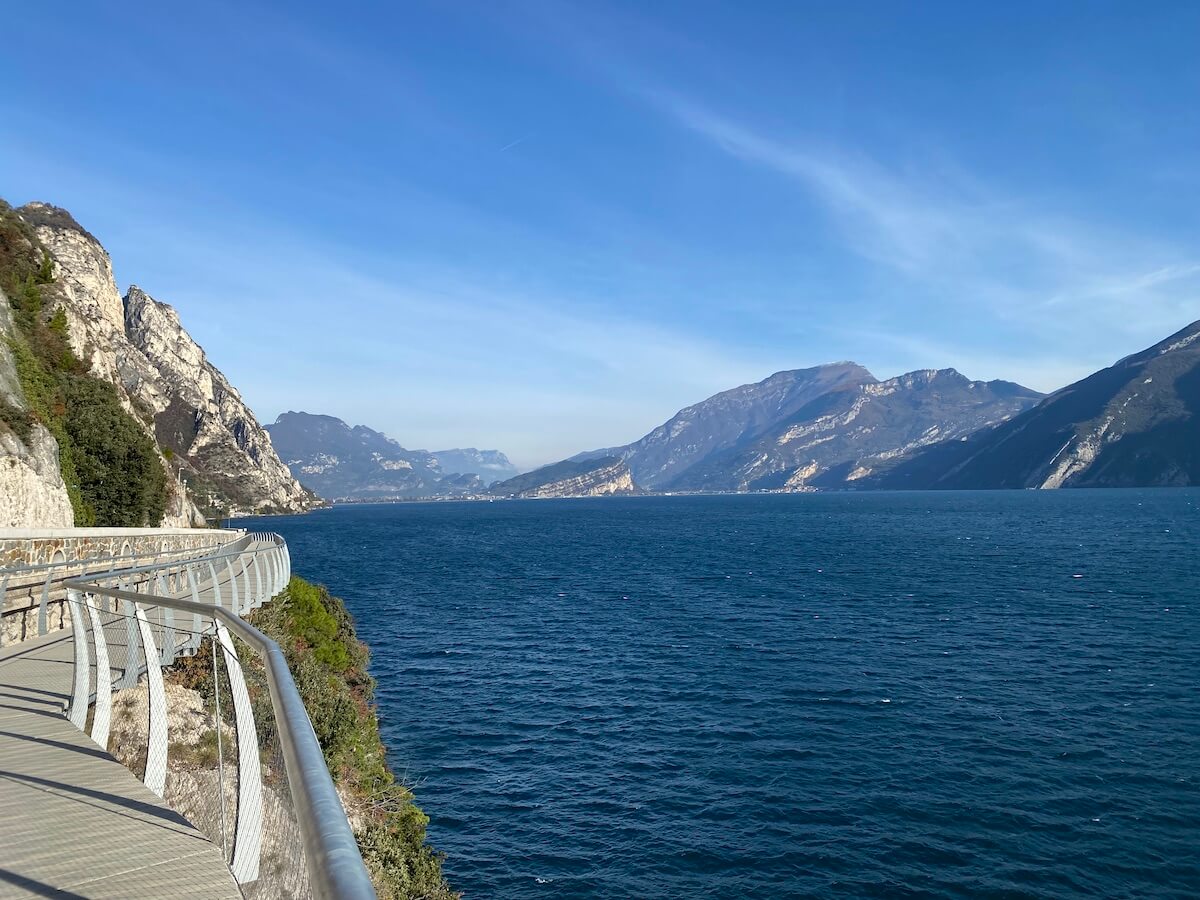
Top 5 sights in Limone sul Garda
Limone old town
The biggest attraction of Limone is undoubtedly the old town with its narrow streets, Piazza Garibaldi, the old port (Porto Vecchio) and the promenade. Again and again you can enjoy a magnificent view over Lake Garda, across to Malcesine and the Monte Baldo mountains. The impressive buildings, some of which are very old, the lush floral decorations, the small stores and the cafes and restaurants form a harmonious ensemble of sights that make a visit to Limone an unforgettable experience.
Museo del Turismo
To record the changes of the small town, the Museo del Turismo was opened in 2011. Here visitors can admire posters, calendars, guidebooks, souvenirs and much more. In addition, there is also fascinating information about the protein A-1 Milano, a gene mutation apparently unique to Limone that prevents cardiovascular disease.
Limonaia del Castèl
The most famous lemon greenhouse in Limone is located in the old town center, between Via Orti and Via Castello, and extends over several terraces. Today it serves as a museum and can be visited. From here you have a wonderful view over the closely spaced houses of the old town.
Churches
The striking church of San Benedetto is centrally located at the top of the old town. To get there, you have to deviate a few hundred meters from the tourist lanes. In addition, there is the very small church of San Rocco, located just above the Limone sul Garda boat landing.
Bike and pedestrian path – Garda by Bike
An absolute highlight awaits visitors to Limone sul Garda – the new bike and pedestrian path. On July 14, 2018, the new section of the bike-pedestrian path from Limone to the Trentino border was inaugurated. This unique and extraordinary structure allows you to enjoy on foot or by bike a route with breathtaking views between the lake and the sky.
The section is part of the “Garda by Bike” project, which aims to realize a complete bicycle circuit around the lake. The spectacular section near Limone can be cycled or hiked. The path winds along the rock face at a lofty height and offers a dreamlike view in many places that you won’t find anywhere else on the lake in this form.
To reach the trail, park your car in the marked public parking lots in the center. From there, walk or bike through the old town of Limone to Capo Reamol.
The trail is accessible to all and open even at night, as the path is illuminated with LED lights.
Campione del Garda – district of Tremosine
The wild ride on the Gardesana continues. Before reaching Campione, it is recommended to make a small detour in the direction of Pieve di Tremosine. On the famous Strada della Forra we go through the Brasa Gorge to Tremsoine.
Campione del Garda, also belongs to Tremosine and can be reached only through a tunnel. Campione is known for its water sports activities, moreover the place is parts of the Tremosine hike Campione – Pieve.
Gargnano – A time travel through different eras
On the way to the next largest town, Gargnano is worth mentioning. Gargnano consists of 13 hamlets, three of them (Bogliaco, Gargnano and Villa) are on Lake Garda, while the rest are between Lake Garda and Lake Valvestino. Gargnano was already mentioned in the year 973.
In the 13th century Franciscans founded a monastery in the region. In 1285 they built a church dedicated to St. Francis. Between 1921 and 1933 Gargnano was the terminus of the Brescia-Salò-Gargnano streetcar line.
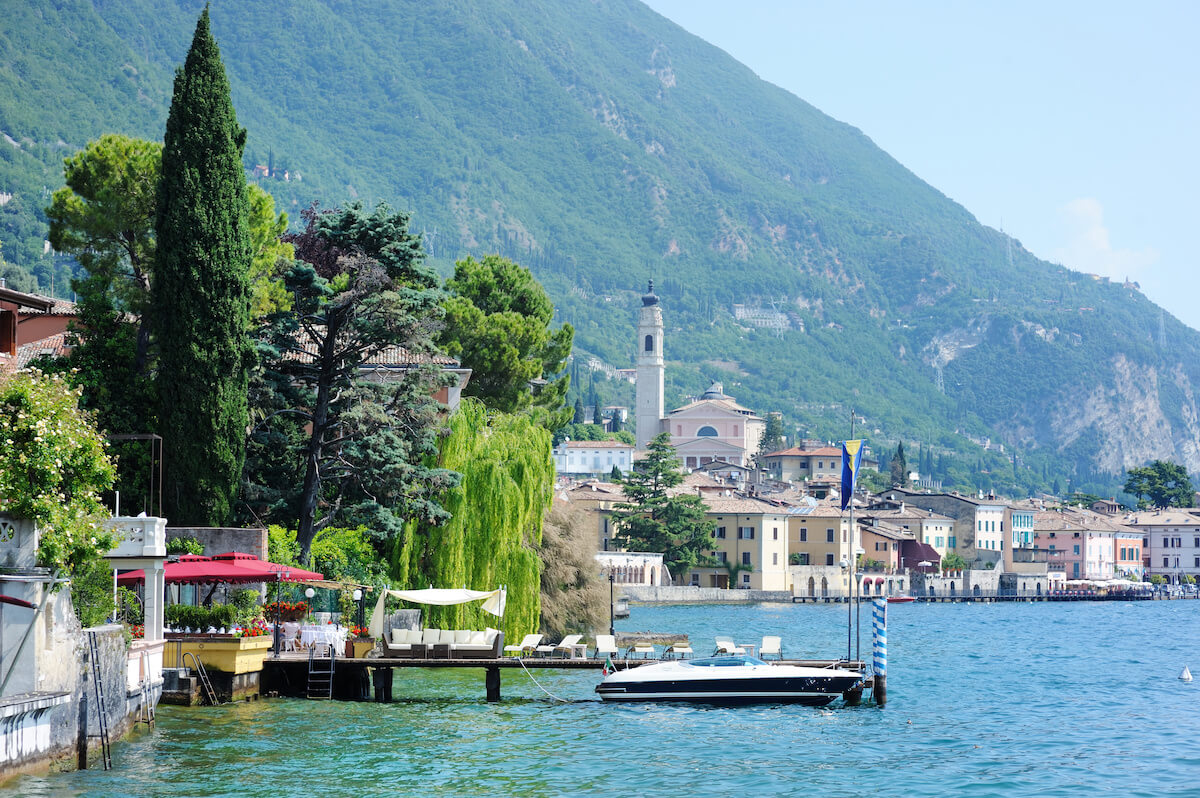
Top 3 places of interest in Gargnano
Church of San Francesco
In 1289, Francis of Assisi had a church and monastery built on this site. From the original church today, in a modified form, only an outer wall has been preserved. The cloister with its ornate columns is particularly worth seeing. The interior of the church was 17. and 18th century remodeled several times.
Church of San Martino
The church of San Martino was built on the remains of an older church. Only the bell tower, a Renaissance construction, remained from the original building. The first design of the parish church is said to have been made by an architect from Trentino. The completion of the building was entrusted to the Brescian architect Vantini in 1837. Inside there are paintings by Giovanni Andrea Bertanza and G.B. Cesari and a representation of the Virgin of Moretto on the main altar.
Villa Feltrinelli
Villa Feltrinelli, located a few hundred meters north of Gargnano, is the most famous historical building in Gargnano. In a picturesque location on the western shore of Lake Garda, it served as a country residence for the Feltrinelli family, who used it as a refuge from the summer heat of Milan after they moved there. The property, built in neo-Gothic style, was personally supervised by the Feltrinellis in terms of interior decoration. They commissioned various craftsmen of the time to create intricate wood paneling, carved wooden ceilings, polychrome stained glass windows and ceiling frescoes.
Villa Feltrinelli served as a residence for Benito Mussolini during the Fascist Republic of Salò from 1943 to 1945. Today the villa houses the Grand Hotel a Villa Feltrinelli. The American hotelier and millionaire Robert H. Burns acquired the villa in 1997, invested around 30 million euros and thus saved it from decay.
Town on the western shore of Lake Garda – Toscolano-Maderno
Our tour continues to the next larger town, Toscolano-Maderno. Before reaching it, we pass, besides Gargnano, the smaller villages of San Giacomo, Villa, Bogliaco and San Giorgio.
Toscolano Maderno belongs to the province of Brescia in Lombardy. Compared to the provincial capital, the town is located in the northeast direction, about 40 kilometers away. It is located on the western, i.e. Brescian, shore of Lake Garda and is part of the Alto Garda Bresciano Regional Park. In this municipality is also located the mountain Pizzocolo.
Toscolano and Maderno are two centers that over time have become agglomerations. The border between the two villages is formed by the Toscolano torrent. Until 1928 they were administratively independent municipalities.
The industrial roots of Toscolano Maderno date back to the 13th century, when the first paper mill was built in the “Camerate” area. A preserved notarial deed dated October 17, 1381, regulates the division and use of the river water in nine points. In the 15th century there were branches in many places.
From the lake to the so-called Valley of the Paper Mills, the area had a prominent importance within the territories of the Republic of Venice until the 16th century. Thanks to the excellent quality of the paper produced, which was very clear, resistant and suitable for printing, the municipalities of Toscolano and Maderno became the first paper location. Toscolano and Maderno were among the first and most important production sites in Europe.

Top 3 places of interest Toscolano Maderno
Paper Mill Valley (Valle delle Cartiere)
The paper mill valley of Toscolano Maderno is today an idyllic and quiet river valley surrounded by the green countryside and steep mountains of the Alto Garda Bresciano Natural Park, frequented by hikers, cyclists and families.
The valley was once a center of paper production, and the ruins of the old paper mills line the path along the steep gorge of the trout stream that gave its name to the town of Toscolano on Lake Garda.
The starting point for a tour of the Paper Mill Valley is the valley entrance behind the Town Hall (Municipio) of Toscolano. The steep mountain slopes surrounding the Paper Mill Valley invite you to take a leisurely walk along the river deep into the valley and back. A visit to the Museo della Carta, located near the entrance to the valley, should definitely be planned.
Church of the Holy Apostles Peter and Paul
The original Romanesque parish church of Toscolano was dedicated to St. Peter. In the 16th century the medieval building was demolished because it no longer met the needs of the faithful in the important municipality on Lake Garda. The official reconstruction began with the laying of the foundation stone in 1584, after the pastoral visit of the Cardinal and Archbishop of Milan, Carlo Borromeo, in 1580.
In the following two centuries the wall structure of the building was completed and the interiors were enriched with decorations, in which in particular the local artist Andrea Celesti was instrumental.
The facade was completed in the 19th century. Due to the damage caused by the 2004 earthquake, consolidation measures and a subsequent comprehensive restoration had to be carried out in the 21st century.
The church is located in the heart of the town of Toscolano and faces southwest. In front of the church square stands the statue of the Immaculate Conception, erected in the second half of the 19th century as a vow after a cholera epidemic.
Botanical Garden Giordano Emilio Ghirardi
The garden “Giordano Emilio Ghirardi”, which is about 10,000 m², is also known as Experimental Botanical Garden “Emilio Ghirardi” and Botanical Garden Toscolano Maderno. It is managed by the University of Milan and is located in Via Religione. The garden was created in 1964 as an agricultural experimental station for mimosas under the direction of Professor Giordano Emilio Ghirardi.
Gardone Riviera – Known for its numerous gardens and parks
Continuing south, you pass the municipality of Gardone Riviera with 2,658 inhabitants. Gardone is one of the most beautiful places in Italy since 2017, as a member of the association I borghi più belli d’Italia.
The municipality of Gardone Riviera consists of the districts of Gardone Sotto, Gardone Sopra, Fasano Sotto and Fasano Sopra. The hills surrounding the village create a mild microclimate that favors a mixture of Central European and Mediterranean vegetation, such as citrus plants, cypresses and agaves. Within the municipality there are numerous parks and gardens.
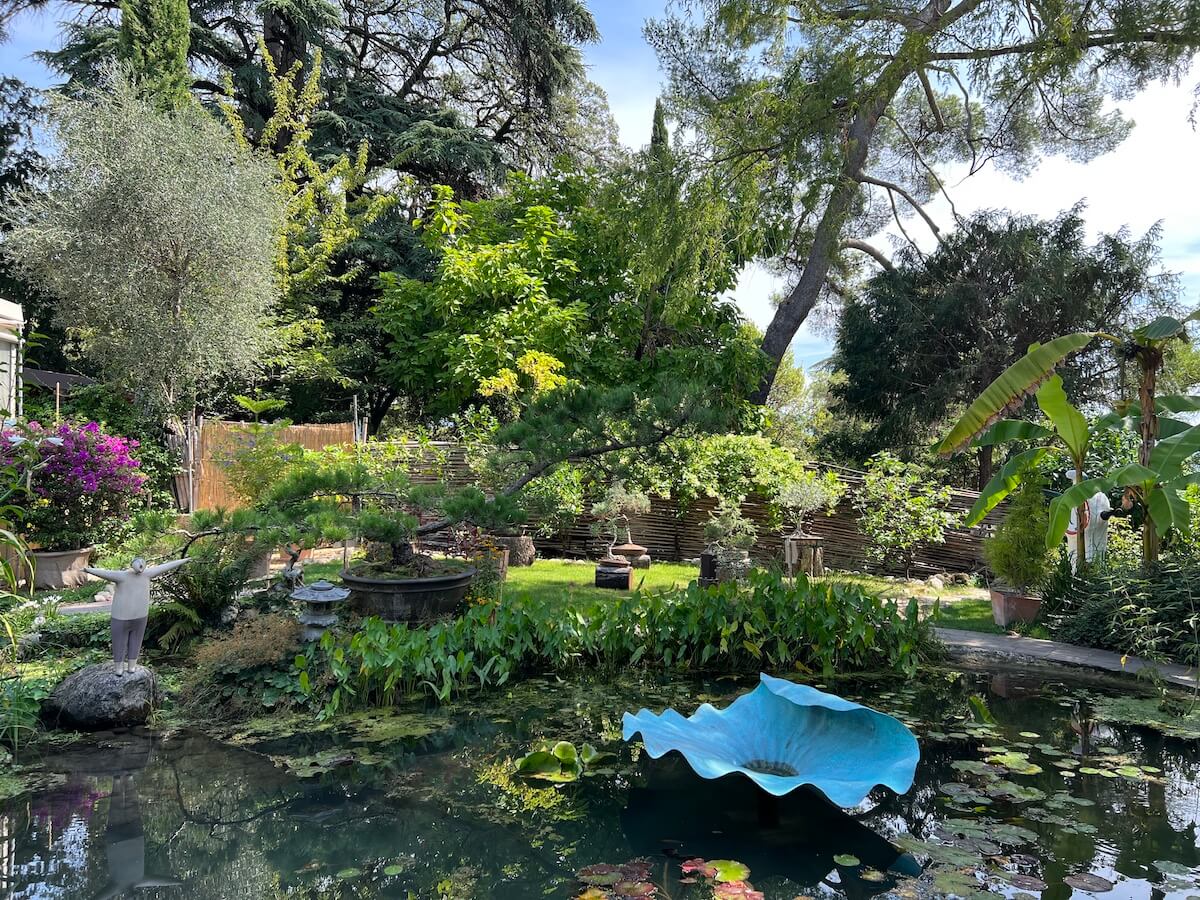
Top 3 places of interest in Gardone Riviera
Gardone Riviera waterfront
The lakeside promenade of Gardone Riviera still embodies the splendor that gave the region from the 14th to the end of the 18th century earned the nickname “Magnifica Patria” (Great Homeland). At In the 19th century Gardone Riviera was established as a health resort and quickly became a center of attraction for the international elite on Lake Garda. The historic luxury hotels along the promenade are silent witnesses of this era and possibly represent the beginnings of tourism on Lake Garda.
Heller Garden
The Botanical Garden in Gardone Riviera, also known as the “Heller Garden”, is located in the historic district of Gardone di Sopra. The garden was originally started by naturalist and botanist Arthur Hruska, who also worked as a dentist for the Italian royal family, Popes Pius XII and John XXIII, Russian tsars and King Albert of Belgium. In 1901, Hruska purchased a 15,000-square-meter plot of land in Gardone Riviera, laying the foundation for today’s Botanical Garden.
The terraces of the property, originally intended for vine cultivation, formed the foundation of his park, which reached its peak in the 1920s. André Heller took over Hruska’s legacy in 1988 and continues to run it today. Today, the Giardino Botanico Fondazione André Heller houses around 3000 plant species from all over the world. This incredible wealth of species, combined with contemporary sculptures and remarkable landscaping, come together to create a stunning work of art.
Museum Vittoriale degli italiani
The Vittoriale degli italiani, which means “Victory Monument of the Italians” in German, is a museum ensemble in Gardone Riviera. It was the former residence of the Italian author Gabriele D’Annunzio (1863-1938), who had the estate designed from 1921 under the direction of the architect Giancarlo Maroni (1893-1952).
Today, the site covers nine hectares and, in addition to the buildings and the amphitheater, also houses gardens, parks, squares and waterways.
Salò – The “gateway” to the western shore of Lake Garda
The wild ride continues…The next town on the western shore of Lake Garda that we want to introduce to you is Salò.
Salò has 10,619 inhabitants according to Wikipedia and was founded in Roman times as Pagus Salodium. In the Middle Ages it was the residence of the Visconti. In 1337 Salò became the capital of the Magnifica Patria, a union of the western municipalities of Lake Garda and part of the Sabbia Valley. From 1440 the city was under the control of the Republic of Venice.
In 1887 Salò received a railroad connection with the Brescia-Salò-Gargnano streetcar line, which was gradually extended to Gargnano until 1921. Operations on the last remaining section of the Brescia-Salò line were discontinued in 1954.
From 1943 to 1945 Salò was in fact the capital of Benito Mussolini’s Fascist Social Republic (RSI) under the military protection of the Greater German Empire. Because of this, Pier Paolo Pasolini named his film Salò o le 120 giornate di Sodoma (Salò or the 120 Days of Sodom) after the town.
A famous Art Nouveau building is Villa Laurin, which housed the Ministry of Foreign Affairs and is now a hotel.
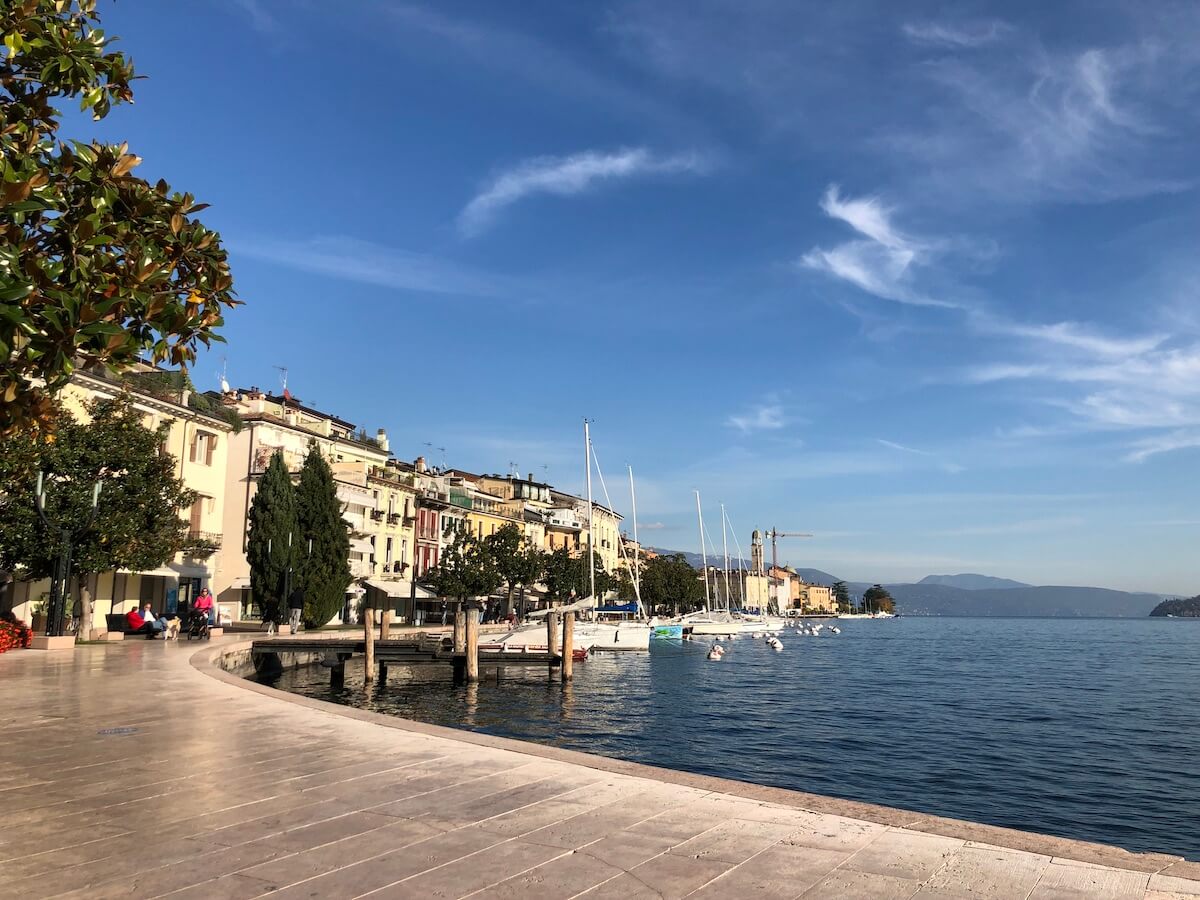
Top 3 attractions of Salò
Salò waterfront
The long lakeside promenade (Lungolago Zanardelli) invites visitors to take a leisurely stroll and admire a multitude of magnificent palaces and impressive arcades. We have been to Salò a few times, especially in late autumn. For us, this place is a little insider tip 🙂
Cathedral of Santa Maria Annunziata, Salò
The late Gothic cathedral is known as the largest and most important church on Lake Garda, although this is not immediately obvious from the outside. Construction began in 1453 and lasted 50 years, which is why you can also discover some elements of the Renaissance. The impressive interior contains, among other things, a magnificent altar decorated with lots of gold and stucco, as well as numerous oil paintings, including the work “Saint Anthony of Padua” by the artist Romanino. The floor mosaic impresses with its three-dimensional appearance.
Don’t forget to treat yourself to a delicious gelato at the ice cream parlor right next to the cathedral! The Gelateria “La Casa Del Dolce” has the reputation of being one of the best ice cream parlors on Lake Garda.
MUSA – Museum of Salò
The museum offers insights into the eventful history of the Lake Garda town of Salò and its inhabitants. Written documents, paintings and various exhibits tell the history of the place from the beginning of the 15th century, when Salò was under Venetian rule, to the time of the Second World War.
Among other things, the museum dedicates a special room to the violin maker Gasparo da Salò (1540 – 1609). His Contrabasso Biondo is on display there and can be heard at various events at the museum.
Also on display are some anatomical specimens made by the Salò-born surgeon Giovan Battista Rini (1795 – 1856), equipment for recording seismic activity from the 18. and 19th century and numerous drawings of the Civica Raccolta del Disegno.
San Felice del Benaco – Tuscany Feeling at Lake Garda
We continue south, to the next town on the western shore of Lake Garda, San Felice del Benaco: the sprawling municipality is located on the southwestern shore of Lake Garda, nestled in the charming hilly landscape of the Valtenesi. This terminal moraine landscape, characterized by vineyards, olive and cypress forests, and picturesque hilltop villages, is reminiscent of Tuscany. The additional name of the town comes from the ancient name for Lake Garda, lacus Benacus.
Narrow roads lead to the picturesque bays around Porto San Felice, Porto Portese and the San Fermo peninsula. Many campsites have established themselves on the partly very extensive pebble beaches. In front of the peninsula of San Fermo is the beautifully overgrown Isola del Garda, the largest island of Lake Garda.
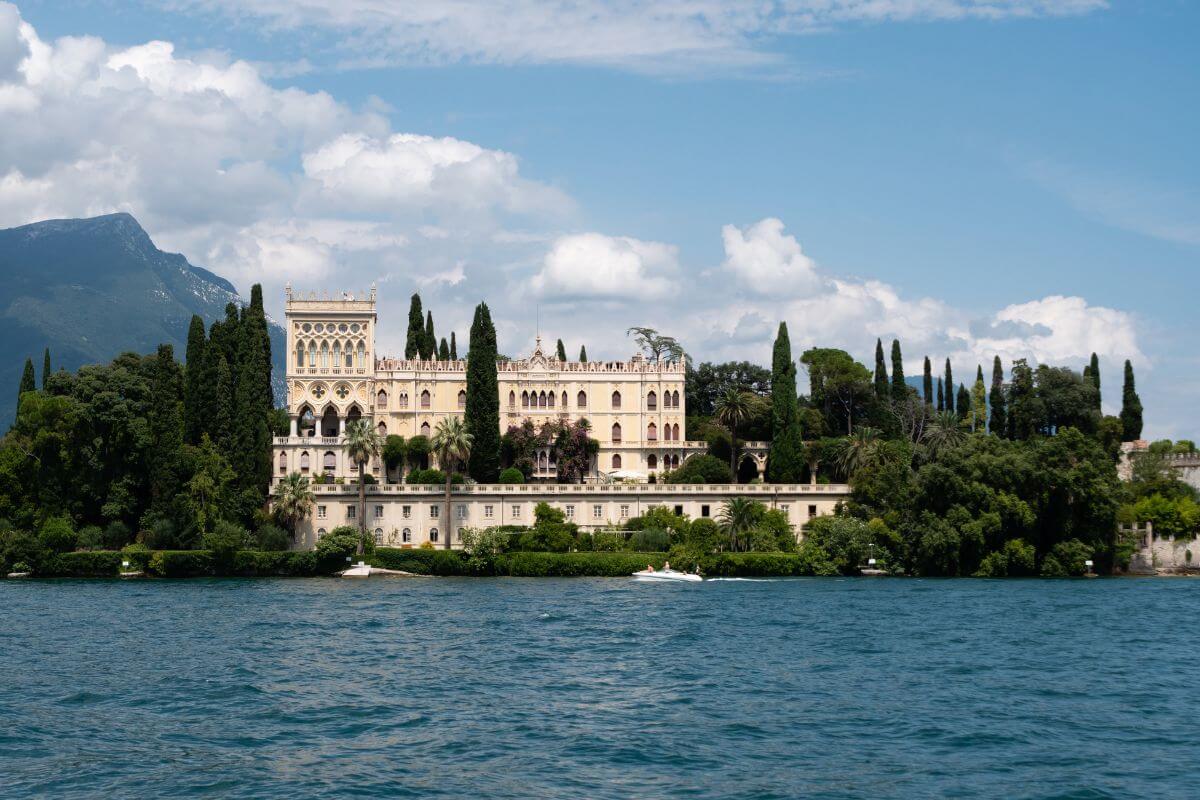
Top 3 places of interest San Felice del Benaco
Isola del Garda
If you decide to explore San Felice del Benaco, a trip to Isola del Garda is definitely a good idea. The island, located about 200 meters from the peninsula of San Fermo, is the largest island of Lake Garda, with a length of about one kilometer. This jewel was inhabited as early as the 13th century, when St. Francis – also known as Francis of Assisi – founded a monastery here. Although this sacred building fell victim to an attack by Napoleon’s troops, the Borghese family took the opportunity to build a magnificent palace on the ruins of the monastery. This sight alone makes a trip to Isola del Garda worthwhile.
Parish church of San Felice del Benaco
The baroque church is one of the most impressive churches on Lake Garda. This is due, among other things, to the altarpiece by the Brescian artist Romanino, the ceiling frescoes by Carlo Carloni and a Roman stone on the outer wall of the church, said to be dedicated to the god Neptune.
Port and old town
In the Portese district, only fragments of the old round tower from the medieval fortress ruins, the Castello, remain today. Nevertheless, the old town of San Felice offers many historical sights, including a multitude of noble villas and impressive buildings. During a leisurely stroll through the city you should definitely visit Palazzo Rotingo and Palazzo Ex Monte di Pietà. Another recommended place to visit is the lively harbor, which is located a bit away from the city center. In its vicinity there are numerous cafes and bars that invite you to linger.
Manerba and Moniga del Garda – The two M’s
Manerba del Garda
Since the early Middle Ages, Manerba del Garda was the site of a castle, the Rocca di Manerba, right on the lake. Some remains of the castle still exist today.
Moniga del Garda
Archaeological findings suggest that the area of today’s Moniga del Garda has been inhabited since the Bronze Age, at that time in the form of a pile-dwelling settlement. Later, in Roman times, a town was settled here. At 13. or In the 14th century the present castle, the Castello di Moniga, was built. The first written mention of Moniga is found in a deed of donation from the 14th century, in which John of Bohemia gave the castle to the Lords of Castelbarco.
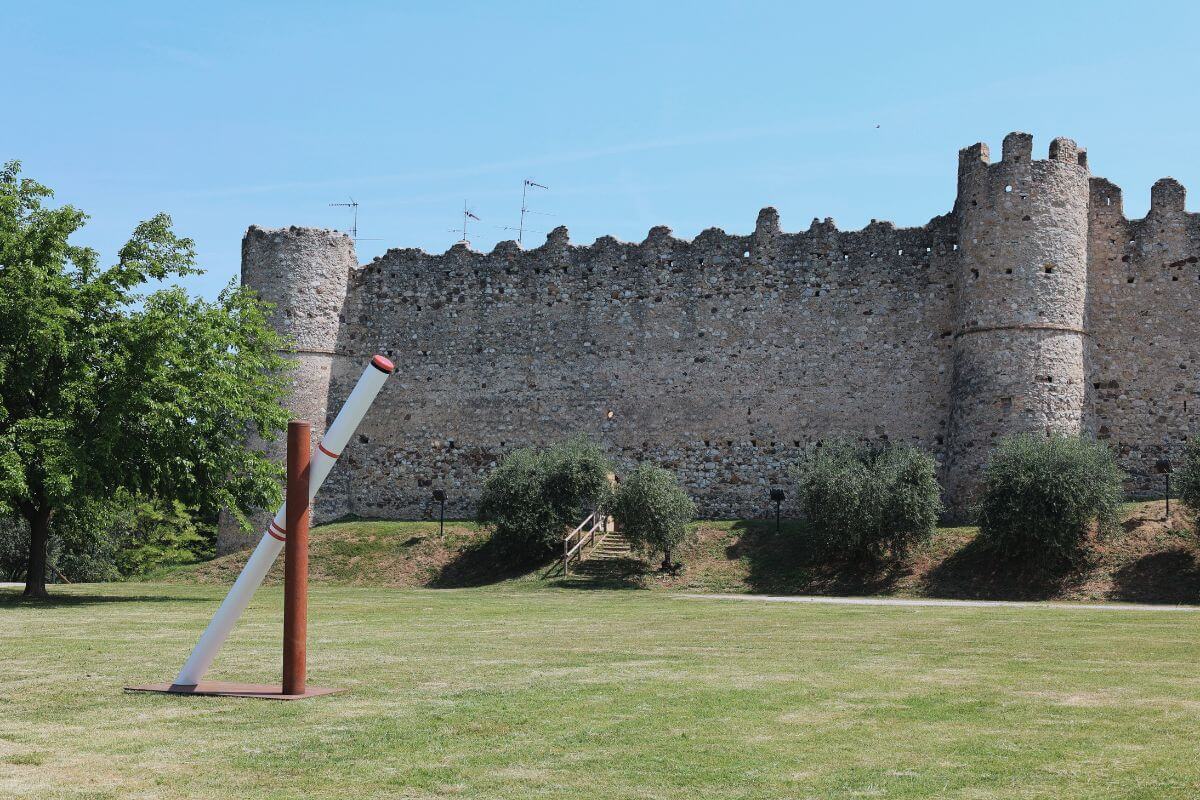
TOP 5 Sights in Manerba and Moniga del Garda
Rocca di Manerba
The castle was first mentioned in documents from 1090 and went through several changes of ownership in its history. In 1277 it was conquered by Brescia and later partially destroyed. After its restoration, the Rocca was besieged by Gaston de Foix’s troops during the Great Venetian War of 1512 and was subsequently demolished.
Today, two upper protective rings of the medieval fortress can still be seen. The discovery of the castle comes from accidental findings in 1955 and was supplemented by later systematic excavations.
Isola di San Biagio
Isola di San Biagio, the second largest of the five islands in the lake, is located about 200 meters from the west coast in the bay that separates Manerba and San Felice. The island can be reached by water cab or by hiking through knee-deep water. This small island, affectionately known as “Rabbit Island,” has become a popular destination, especially for its quiet swimming. When visiting in the summer months, a cozy beer garden awaits you, as well as an attractive sunbathing lawn equipped with showers and sanitary facilities.
Castello di Moniga
The Castello di Moniga is located on the highest point of the town of Moniga del Garda. Despite this elevated position, the castle was not of strategic importance due to its easy accessibility and was therefore never the scene of intense battles. For this reason it is the best preserved castle in the Valtènesi region. Archaeological excavations have shown that the construction of the castle did not take place before the 13th century. Its ground plan is almost rectangular, with round defense towers at the corners and a semicircular tower in the middle of the walls. However, this pattern is interrupted on the northeast entrance side, where there is an angular tower with the entrance.
Villa Bertanzi
Villa Bertanzi, a late 17th century palace, is located about 350 meters northwest of the castle in Via Dante Alighieri and originally belonged to the Brunati family. Today the villa is privately owned by the Bertanzi family and is open to the public only during the wine festivals Palio del Chiaretto in April, Italia in Rosa in June and Rassegna del Chiaretto in July.
Madonna della Neve
The church of Madonna della Neve is a Romanesque style structure built in the second half of the 16th century. It is the newest church of this architectural style in the Valtènesi region. It is located about 600 meters south of the castle near the cemetery of Moniga del Garda and serves as a chapel in summer.
While the terracotta floor dates back to the 16th century, the murals were made in the 20th century. In the 19th century the church was used as a hospital during a cholera epidemic. After the epidemic was overcome, the church was disinfected by applying lime to the walls, which destroyed the murals.
Padenghe sul Garda – Gateway to the Valtènesi
The last town on the western shore of Lake Garda that we want to introduce to you is Padenghe sul Garda. The origin of the name Padenghe is still disputed today. There are different theories about it: Some believe that the name comes from the Ligurian words “Badinco” or “Badengo”, while others see a derivation from the Latin “Patibulum” or “Patet in angulo”, referring to a place where convicts were imprisoned. Still others see a connection to the Latin “patingulae” or “patingularum”.
Padenghe has a long history dating back to the Neolithic period (10000 BC – 2200 BC). Archaeological discoveries have shown that the place was inhabited already in that period. During the Roman period, Padenghe was undoubtedly an important stopover for patrician families going to the imperial court in Milan. Especially in the 3. and 4th century magnificent villas and temples were built here. Padenghe was also at that time an important commercial port, competing in importance with the ports of Peschiera and Riva.
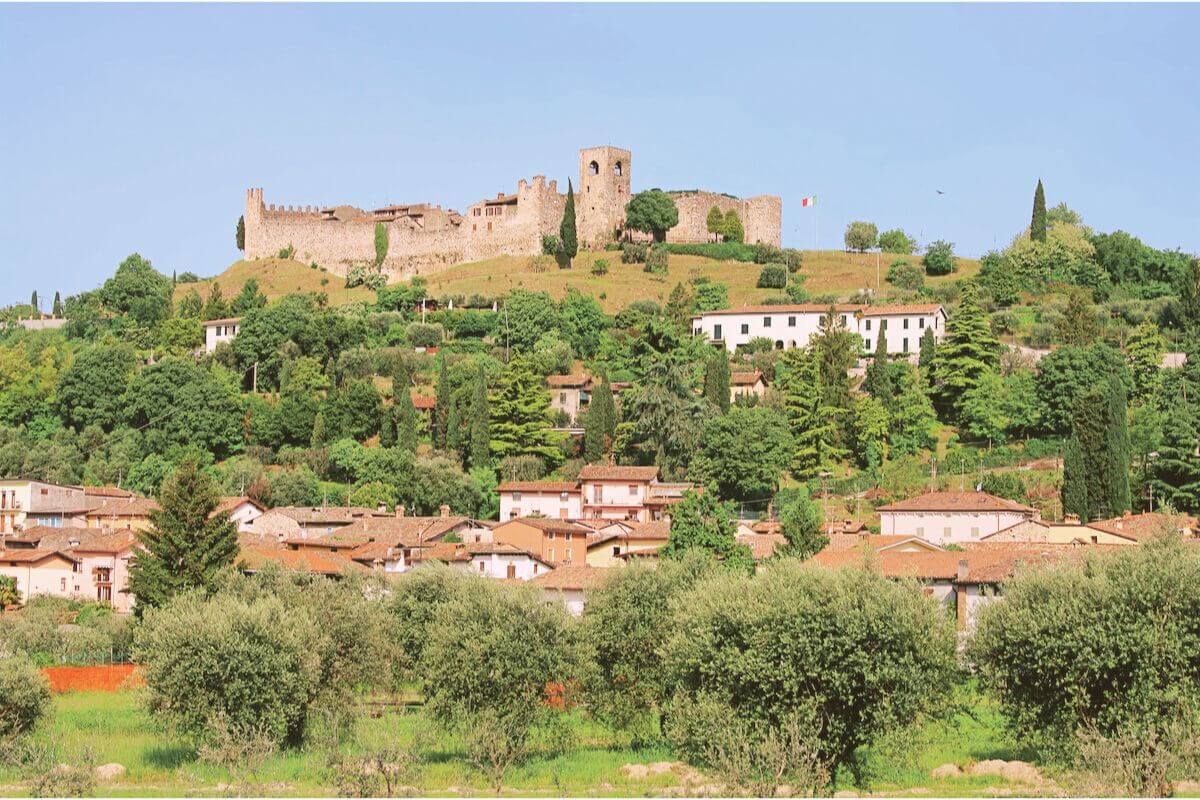
Top 3 places of interest in Padenghe sul Garda
Castello di Padenghe
The castle of Padenghe was built towards the end of the 9th century on the remains of a Roman fortress and is possibly the oldest castle in Valtenesi. Through subsequent conversions in the 13. and 14th century it received its current form. This powerful structure served as a refuge for the inhabitants of Padenghe to protect themselves from enemy attacks. The castle has a rectangular ground plan and its entrance is surmounted by an imposing tower. Within the castle walls there are narrow cobblestone streets along which various houses can be found, some of which have been recently restored.
Parish Church of Santa Maria
The parish church of Santa Maria was built in 1682. Inside there are remarkable paintings by Paolo Farinati (1522-1606) and Zenon Veronese (16th century). Particularly impressive is a magnificent altarpiece by Celesti and two statues by Antonio Caregari (1699-1775). Visitors have the opportunity to admire these artistic treasures and experience the beauty of the Church of Santa Maria.
Villa Barbieri
An impressive residence is Villa Barbieri, built in the late 1700s and located near the church. The building is designed in the style of the 18th century, although the foundation is probably older. Upon entering the villa, one is greeted by a magnificent entrance hall, which features a six-column portico with cross vaults and a grand marble staircase. Villa Barbieri is a striking example of the architecture of the period and attracts visitors with its majestic appearance.
Town on the western shore of Lake Garda – Summary
Our journey through the most beautiful places on the western shore of Lake Garda: it begins in Riva del Garda, a historic town with a cheerful atmosphere and surrounded by majestic mountains. The history of Riva del Garda dates back to ancient times and the town was subject to various rulers over the centuries before finally becoming part of Italy.
Continue to Limone sul Garda, a picturesque town known for its lemon gardens and breathtaking views. Although the name refers to the lemon fruit, it actually derives from the border between the provinces of Brescia and Trento.
The journey continues to Campione del Garda, a hamlet of Tremosine known for water sports activities. Then you reach Gargnano, a town with a rich history dating back to different eras. Toscolano-Maderno, a municipality with industrial roots, follows on the road to the south.
Gardone Riviera impresses with numerous parks and gardens, while Salò is considered the “gateway” to the western shore of Lake Garda and has an interesting historical past. San Felice del Benaco offers a Tuscan atmosphere with its hills and picturesque villages, while Manerba and Moniga del Garda are two other charming towns with historic castles.
The journey ends in Padenghe sul Garda, a town with a long history that dates back to the Neolithic and played an important role as a stopover for patrician families during the Roman period.
Overall, the western shore of Lake Garda offers a variety of impressive cities and towns, characterized by scenic beauty, historical sights and the unique atmosphere of Lake Garda.




